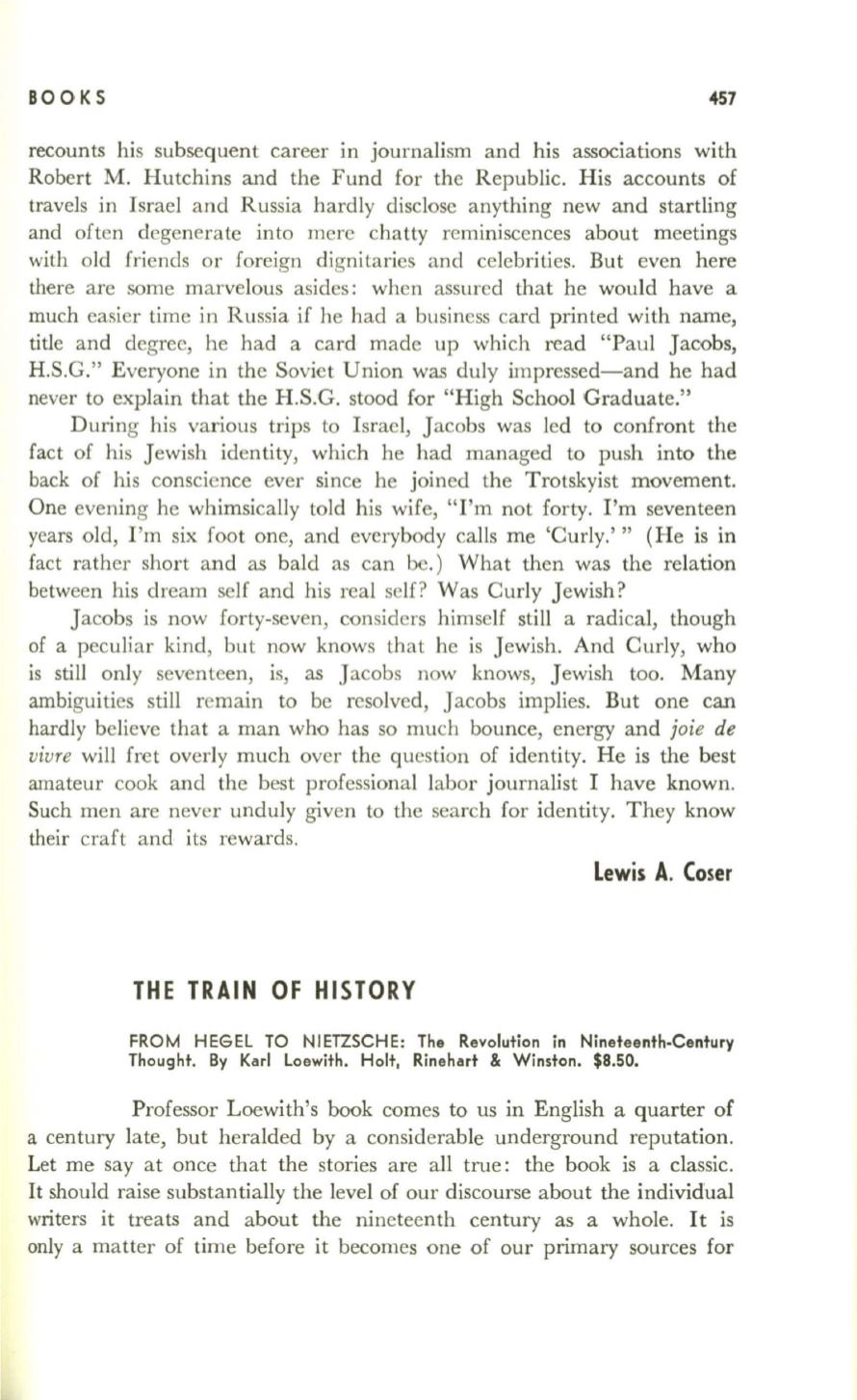
BOOKS
457
recounts his subsequent career in journalism and his aSSocIatIOns with
Robert M. Hutchins and the Fund for the Republic. His accounts of
travels in Israel and Russia hardly disclose anything new and startling
and often degenerate into mere chatty reminiscences about meetings
with old friends or foreign dignitaries and celebrities. But even here
there are some marvelous asides: when assured that he would have a
much easier time in Russia if he had a business card printed with name,
title and degree, he had a card made up which read "Paul Jacobs,
H.S.G." Everyone in the Soviet Union was duly impressed-and he had
never to explain that the H.S.G. stood for "High School Graduate."
During his various trips to Israel, Jacobs was led to confront the
fact of his Jewish identity, which he had managed to push into the
back of his conscience ever since he joined the Trotskyist movement.
One evening he whimsically told his wife, "I'm not forty. I'm seventeen
years old, I'm six foot one, and everybody calls me 'Curly.'" (He is in
fact rather short and as bald as can
be.)
What then was the relation
between his dream self and his real self? Was Curly Jewish?
Jacobs is now forty-seven, considers himself still a radical, though
of a peculiar kind, but now knows that he is Jewish. And Curly, who
is still only seventeen, is, as J acobs now knows, J ewish too. Many
ambigui ties still remain to be resolved, Jacobs implies. But one can
hardly believe that a man who has so much bounce, energy and
joie de
vivre
will fret overly much over the question of identity. He is the best
amateur cook and the best professional labor journalist I have known.
Such men are never unduly given to the search for identity. They know
their craft and its rewards.
Lewis A. Coser
THE TRAIN OF HISTORY
FROM HEGEL TO NIETZSCHE: The Revolution in Nineteenth-Century
Thought. By Karl Loewith. Holt, Rinehart
&
Winston. $8.50.
Professor Loewith's book comes to us in English a quarter of
a century late, but heralded by a considerable underground reputation.
Let me say at once that the stories are all true: the book is a classic.
It should raise substantially the level of our discourse about the individual
writers it treats and about the nineteenth century as a whole.
It
is
only a matter of time before it becomes one of our primary sources for


